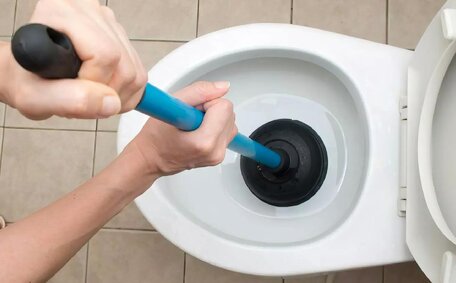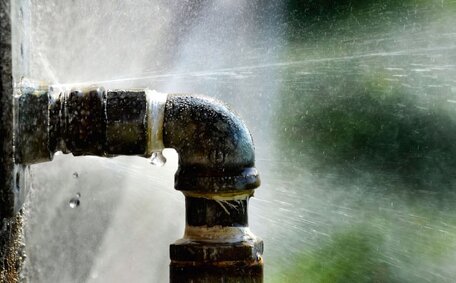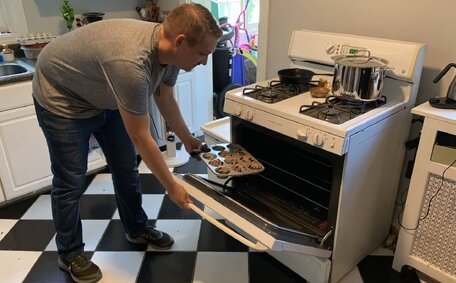Introduction to Gas Fitting Tools and Equipment
To ensure safety and efficiency during gas line installation, maintenance, and repair, specific tools and equipment are necessary. This article offers a detailed overview of the key plumbing gas tools professionals depend on.
Quality tools serve a critical purpose – they allow our team to cut, join, and manipulate gas pipes and components. Our equipment is designed to tackle challenges, test systems, and locate leaks, guaranteeing safety and adherence to standards. Our toolkit also includes safety and protective gear to minimise risks on the job.
We will discuss tools such as press fitting machines, pipe cutters, flaring tools, and detection devices, along with fitting kits, wrenches, and safety equipment. Knowledge of these tools is crucial for methodical gas fitting work.
Our range of high-quality plumbing tools instils confidence in our technicians for complex tasks, ensuring longevity and consistent performance. Explore the versatile tools that facilitate superior gas fitting work as you read on.
Essential Hand Tools for Gas Fittings
Having the correct tools is crucial for any gas fitting task. Below is a comprehensive list of essential tools for gas fitters:
- Pipe cutters – Used to accurately cut gas pipes to length or remove sections. Quality wheel-type cutters can also provide clean, precise cuts.
- Deburring tools – Removes burrs and sharp edges after cutting pipes to create smooth ends for joining.
- Flaring tools – Flares pipe ends to properly connect fittings. Achieving the correct 37-degree flare angle is vital.
- Tubing cutters – Cuts flexible gas tubing for appliance connections without crushing or distorting the line.
- Locking pliers – Ensures a secure grip and turns fittings for gas connections, offering great leverage.
- Adjustable wrenches – Their versatile heads can grip different size nuts and bolts for secure fitting adjustments.
- Screwdrivers – Inserts and removes screws to access gas components. Insulated types prevent dangerous shorts.
- Utility knives – Slices through pipe insulation cleanly prior to cutting/flaring the actual pipe.
- Flashlights – Illuminates dim spaces to clearly see fittings and connections while working.
- Leak detection fluid – Applied after assembly to check for leaks evident by bubbling solution.
Quality hand tools paired with training gives our gas fitters confidence when installing and maintaining safe, leak-free gas systems. They are vital for efficiency and precision in our work.
Advanced Power Equipment in Gas Fitting
Advanced power tools augment the precision and efficiency of gas fitting beyond the capabilities of hand tools. Electric power tools simplify complex and demanding tasks.
Tools such as the Mueller Co. 1⁄2” DR-12 Steel Air Power Operator can expand copper tubes up to 4.5 times faster than manual methods, reducing effort and time significantly. Its 12-tonne force effortlessly prepares large diameters.
The Mueller Co. 3⁄8”-2” MegaPress portable press tool can join pipes up to 4 inches with even compression, resulting in secure joints. It surpasses traditional soldering or threading techniques in speed and efficiency.
Electric Industrial Drills equip us to drill clean passages through structural surfaces. They drive TCT hole saws that bore custom openings for vents or appliance connectors through wood, sheet metal or masonry. This avoids dangerous hammer drilling and messy aftermaths.
Threading and Tapping Machines, such as the Mueller Portamate PM-600, simplify the creation of accurate internal threads. Their adjustable dies and built-in oilers result in precise, smooth threads for secure, leak-free connections.
Electrically powered tools empower our gas specialists to tackle complex tasks more efficiently, demonstrating our dedication to quality work.
Safety Devices and Protective Gear
When dealing with hazardous gases, ensuring worksite and personal safety is paramount. We utilise various devices and protective gear to safeguard against potential dangers.
Gas detectors are vital for sniffing out gas leaks before they become problematic. Handheld units like BGR’s GasAlertMicro 5 PID detect natural gas, LP gas and methane down to 1 ppm. They provide alerts to ensure your safety if thresholds are exceeded, enabling rapid response.
For respiratory protection, cartridge masks like 3M’s 6000 Series filter air, defending lungs against particulates. Rubber glove sets also protect your skin against pipe grime and contaminants during handling.
- Kevlar sleeves safeguard against arc flash hazards and enhance welding hose safety.
Using ventilated hose fitting equipment to remove smoke during indoor brazing and insulating mats to protect against conductive floors are just a few examples of our health and safety protocols.
Thorough risk assessments allow us to identify and mitigate hazards at each site. We remain vigilant of wind direction and utilise gas barriers if working outdoors. Signage also protects the public from approaching danger zones.
Safety is our priority before start of any gas job. Our team wears and uses the appropriate devices to work confidently and responsibly. We oversee trainees until competencies ensure consistent protective precautions.
Gas Detection and Leak Prevention
Preventing gas leaks is crucial for every gas system job. We use advanced detection tools to perform thorough sealing tests.
Electronic gas sniffers like Bacharach’s Fyrite PRO are invaluable for their accuracy in locating infinitesimal leaks. Technicians can methodically scan systems using devices that sample air concentrations and display readings, with calibration ensuring elimination of false alarms.
Pressure gauges help identify leaks by showing pressure drops during tests. We pressurise systems with nitrogen or air and watch for rapid pressure changes beyond acceptable limits.
We use leak detection foam as a secondary check to locate leaks, indicated by bubbling at the leak point. Overnight monitoring with combustion analysers aids in detecting gas escapes by measuring oxygen levels.
Meticulous leak checks ensure appliances function safely for clients, avoiding risk of fire, explosion or carbon monoxide poisoning. We keep detection tools calibrated and teams trained on inspection procedures. Safety begins long before the job’s finished.
Maintenance of Gas Fitting Tools
Maintaining gas fitting tools is key to their longevity, performance, and safety. We ensure tools are cleaned after each use to prevent impairments caused by accumulated grime or excess lubricant.
Storage is also vital - tools are kept in protective cases or cabinets to prevent damage. We regularly inspect for defects like cracked handles, blunt blades, or loose parts which could fail unexpectedly. Worn cutters and flaring bits are replaced promptly.
Gauges and detectors undergo calibration every 6 months, ensuring accurate leak and pressure readings. Seals are checked so lost calibration gases don’t endanger technicians.
Lubricating movable joints keeps tools operating smoothly while preventing corrosion. Pipe cutters get fresh cutting oil to reduce friction and enable clean cuts.
Annually, we conduct tool testing and tagging according to safety standards to ensure electrical integrity and prevent on-the-job failures, with records verifying our compliance.
Our professionally maintained tools reflect our commitment to quality and safe gas work. We are thorough in the upkeep of equipment, ensuring the safety of both our technicians and customers.
Conclusion
Essential for gas fitters are the appropriate tools and equipment, which facilitate safe and efficient installations, maintenance, and repairs. Our specialised gear, ranging from basic hand tools to sophisticated power equipment, ensures precision, speed, and quality in completing your job.
Safety is at the heart of all our operations. Devices like gas detectors and PPE protect technicians and the public from potential hazards. We undergo extensive training to utilise equipment responsibly and perform stringent leak checks to verify absolute system integrity.
Our commitment to well-maintained, high-quality tools guarantees dependable gas fitting services. We advise DIY enthusiasts to also focus on safety and proper tool use for their projects.
For expert assistance with your gas fitting needs from replacements to major renovations, Brighton-Le-Sands Plumbing is here to help. Email us or call 1300 349 338 to book your appointment today.






